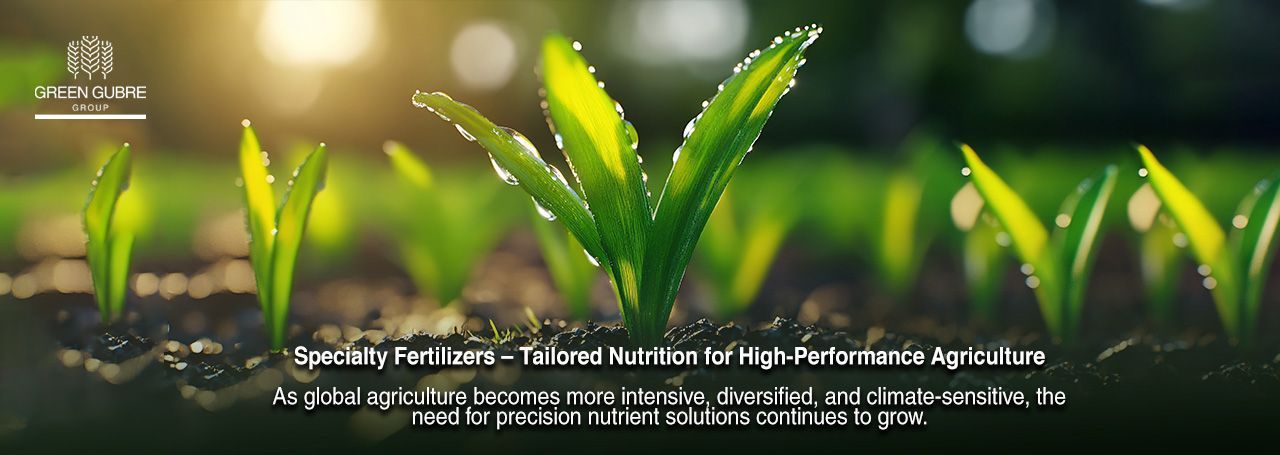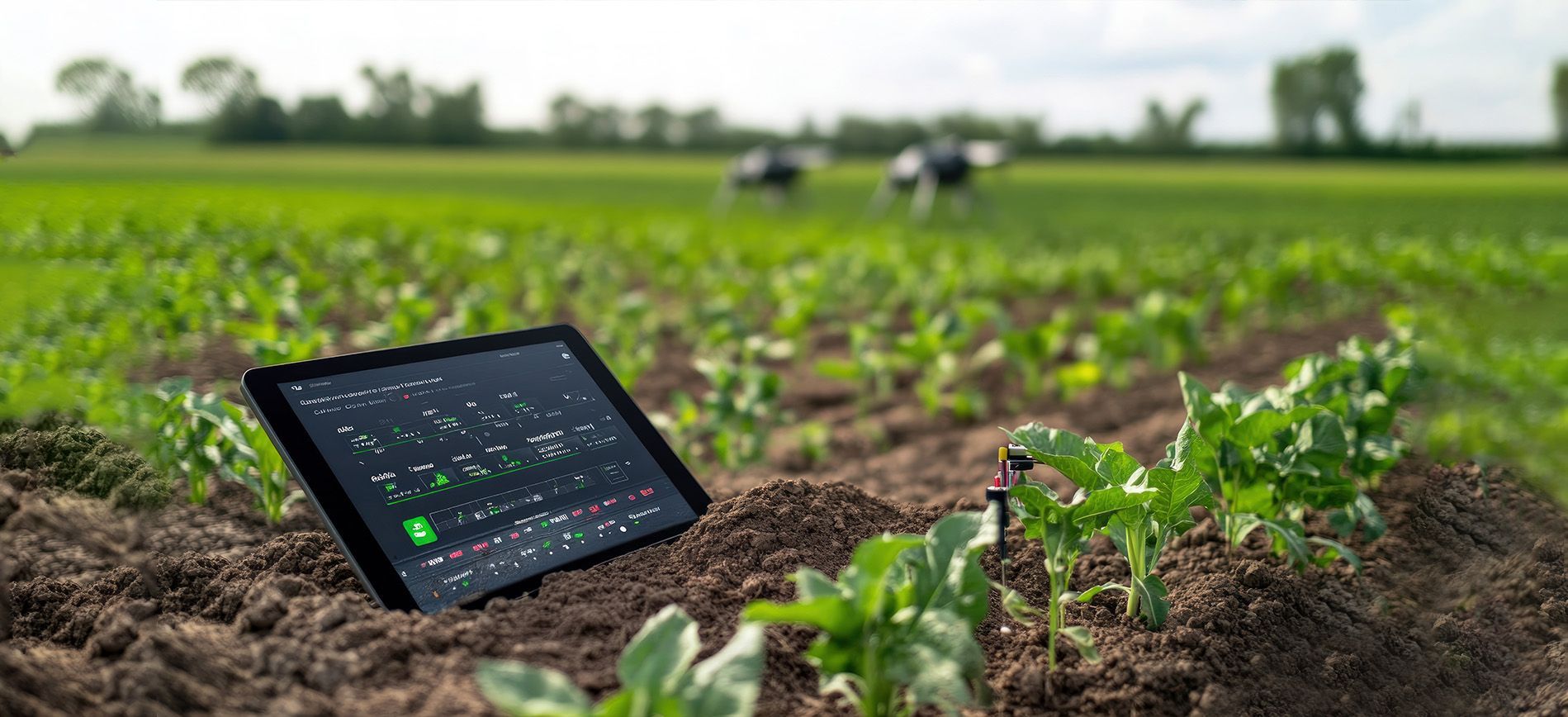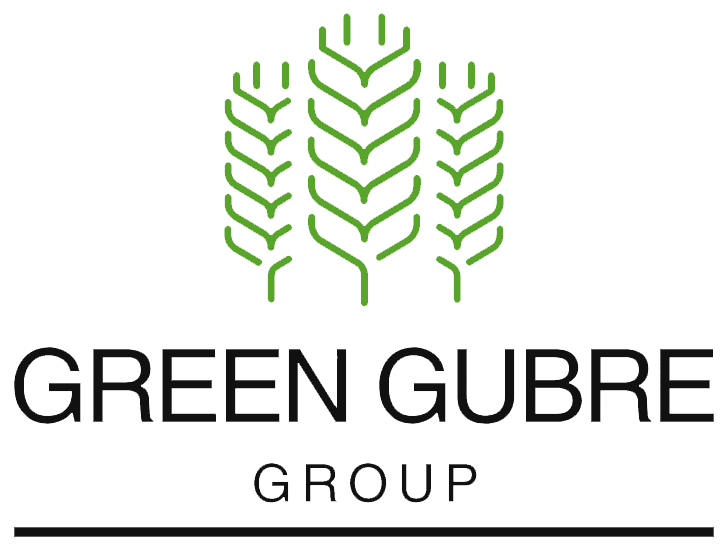Specialty Fertilizers – Tailored Nutrition for High-Performance Agriculture
Specialty Fertilizers – Tailored Nutrition for High-Performance Agriculture

Introduction: Precision Solutions for Complex Crop Demands
As global agriculture becomes more intensive, diversified, and climate-sensitive, the need for precision nutrient solutions continues to grow. Traditional fertilizers may suffice for basic crop nutrition, but high-value crops, protected environments, and export-quality standards demand more refined tools. Enter specialty fertilizers—a broad category of products engineered to meet the nuanced nutritional requirements of crops throughout their growth cycle.
These fertilizers are specifically designed to improve nutrient use efficiency (NUE), address micronutrient imbalances, synchronize nutrient release with plant uptake, and reduce environmental losses. Their role extends beyond simple nutrition—they act as crop performance enhancers, sustainability enablers, and profitability drivers.
🔗 FAO – Specialty Fertilizers and Their Role in Sustainable Crop Production
1. What Defines a Specialty Fertilizer?
Specialty fertilizers differ from conventional bulk fertilizers in their design, delivery method, and precision targeting. They include:
- Slow- and Controlled-Release Fertilizers (SRF/CRF): Release nutrients gradually over weeks or months using coatings, inhibitors, or resin matrices. These are ideal for crops needing long-term, consistent feeding, such as turfgrass, citrus, or oil palm.
- Water-Soluble Fertilizers (WSF): Fully soluble products used in fertigation, foliar spray, or hydroponic systems. They offer immediate nutrient availability and rapid correction of deficiencies.
- Chelated Micronutrients: Chelating agents, such as EDTA, DTPA, and EDDHA, keep metals like iron, zinc, and manganese soluble and available in the root zone, particularly in alkaline or calcareous soils.
- Stage-Specific Formulas: Customized NPK and micronutrient profiles for specific crop stages—high-phosphorus starter formulas, potassium-rich bloom boosters, and calcium-magnesium finisher blends.
- Bio-Enhanced & Enzyme-Activated Fertilizers: Contain microbial additives, seaweed extracts, amino acids, or enzymes that promote nutrient uptake, soil microbiome health, and abiotic stress tolerance.
🔗 ICL Specialty Fertilizers – Fertilizer Categories Explained
2. Key Benefits of Specialty Fertilizers
Specialty fertilizers deliver several agronomic and economic advantages, including:
- Targeted Delivery: Nutrients are supplied in the exact form, dose, and timing that plants need, minimizing waste.
- Higher Nutrient Use Efficiency (NUE): Slow-release and chelated forms reduce nutrient loss through leaching, volatilization, or soil fixation, thereby enhancing nutrient availability and utilization.
- Enhanced Crop Performance: Specialty blends improve color, size, sugar content, firmness, and shelf life in fruit and vegetable crops.
- Environmentally Responsible: Reducing the frequency and quantity of applications lowers greenhouse gas emissions and reduces risks of nutrient runoff.
- Compatibility with Modern Tools: Many formulations are compatible with drones, intelligent irrigation systems, and AI-driven precision agriculture platforms.
For example, a 90-day CRF urea product in strawberry fields reduces labor and nitrogen leaching while maintaining consistent fruiting and canopy growth.
3. Target Crops and Ideal Use Scenarios
Specialty fertilizers are commonly deployed in:
- Greenhouses & Hydroponics: WSFs deliver high-purity nutrients that won’t clog emitters. Recipes are fine-tuned for each crop (e.g., tomato, cucumber, lettuce) and growth stage.
- Orchards & Vineyards: CRF or foliar blends containing calcium, potassium, and boron enhance fruit firmness, mitigate physiological disorders (e.g., bitter pit in apples), and prolong shelf life.
- Vegetable & Floriculture Farms: High-value crops benefit from enhanced pigments, flavor, and aroma through potassium-rich WSFs and micronutrient cocktails.
- Turf, Landscaping & Golf Courses: SRFs reduce mowing frequency, lower nitrogen loss, and ensure uniform greening over long intervals.
- Export Horticulture: Specialty inputs help meet stringent residue limits, ensure nutrient traceability, and adhere to visual grading standards for international markets.
4. Market Trends and Future Outlook
The specialty fertilizer segment is one of the fastest-growing in global agriculture, with a projected market value exceeding $60 billion by 2030.
Key drivers include:
- Climate Change: CRFs help crops perform under erratic rainfall and high temperatures.
- Water Scarcity: WSFs enable precision fertigation with minimal water waste.
- Protected Cultivation Boom: Vertical farms, polyhouses, and greenhouses require fully soluble, clean nutrient sources.
- Policy and Compliance: Regulations aimed at reducing nutrient pollution are pushing the adoption of enhanced-efficiency fertilizers.
- Data-Driven Farming: The integration of AI and IoT favors high-resolution, programmable inputs, such as specialty fertilizers.
Regions such as the U.S., China, Israel, India, the Netherlands, and Spain are at the forefront of both adoption and innovation in this sector.
5. Green Gubre Group – Precision Fertilization for a New Era
At Green Gubre Group, we specialize in delivering crop-specific, regionally adapted specialty fertilizer solutions, including:
- Controlled-Release Products: Coated urea, CRF blends for fruiting and long-duration crops
- Water-Soluble NPK & Micronutrients: Ideal for greenhouse, hydroponic, and fertigation use
- Customized Stage Blends: Starter, vegetative, bloom, and finisher formulas for high-value produce
- Chelated Micro Mixes: Fe, Zn, Mn, Cu, and B in DTPA/EDDHA forms for maximum uptake
- Bio-Stimulant Enhanced Formulations: With amino acids, seaweed extract, and microbial activators
Our goal is simple: deliver precisely what your crop needs, when it needs it, in the most efficient way possible—bringing together agronomy, technology, and sustainability.




